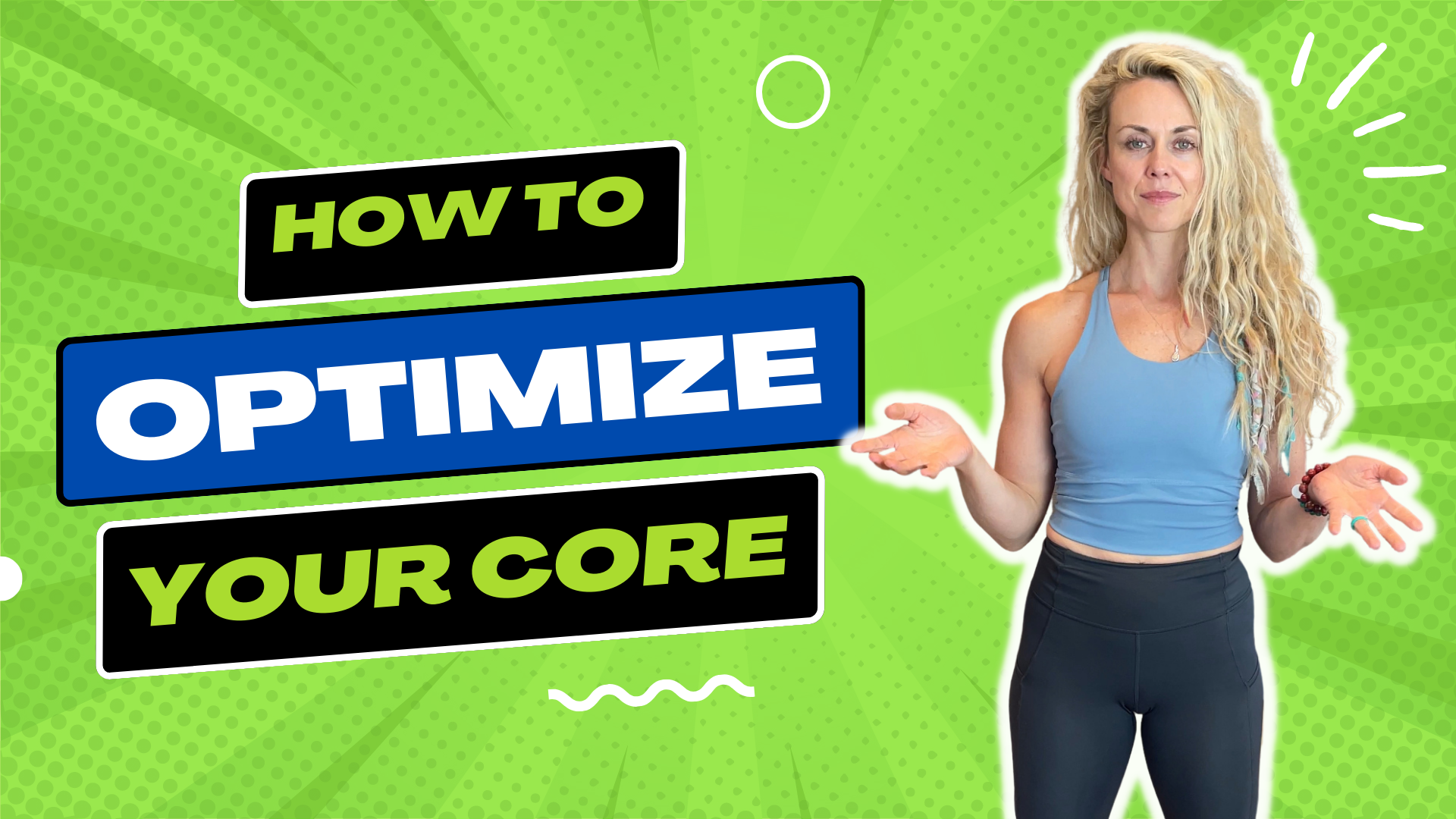Have you ever wondered why your core is so important for your overall physical performance?
While many people focus on building a strong core, there’s more to it than just a toned midsection. Your core is responsible for much more than you may think as it plays a critical role in sequencing, timing, and coordination—all of which are vital for optimal motor control.
By improving your core function, you can move more efficiently, generate more force, and prevent injuries, all of which can help take your physical performance to the next level.
In this blog post, we will discuss how to optimize your core for better function and performance, so you can achieve your fitness goals and enhance your overall health. So, let’s get started!
Rather watch or listen?
Anatomy
The first thing we need to consider when optimizing our core function—our foundation—is stacking or positioning the rib cage over the top of the pelvis.
As we age, we may develop a forward head posture, a tilted pelvis, or a flaring rib cage, all of which can impact our core function. It’s important to remember that posture affects respiration and vice versa—they are interdependent on each other.
Mechanics of Core Function
When we’re optimizing the pressurization system of our core, we need to think about the rib cage being positioned over the top of the pelvis. If the rib cage flares out, we have an open scissors posture, which unfortunately prevents the diaphragm from communicating effectively with the pelvic floor.
Bringing the rib cage back to its neutral position allows for better communication between the two. This creates an opportunity for them to work together more effectively.
Breathing and What’s Happening
When we inhale, we breathe oxygen into the base of our lungs. The diaphragm, a large dome-shaped muscle that separates the thoracic cavity from the abdominal cavity, flattens and compresses all the organs below it, increasing intra-abdominal pressure. This pressure isn’t just a belly breath; we need lateral rib cage expansion and posterolateral expansion to the back of the rib cage.
As the pressure travels downward, it reaches the pelvic floor, causing it to lengthen and relax. If the pressure doesn’t reach the pelvic floor, it won’t lengthen or relax as much as it should. As the pressure goes down, the transverse abdominis muscle, otherwise known as our natural weight belt, eccentrically lengthens.
When we exhale, the pelvic floor and the transverse abdominis muscle contract, creating a weight belt compression, while the outer abdominal muscles, including the six-pack muscles, contract. The rib cage comes down, and the belly button goes in, resulting in a nice core contraction.
Now that you understand the mechanics, envision that when we inhale, the pressure goes down all the way to the base of the pelvis, creating even pressure around the abdomen. This intra-abdominal pressure is fundamental for core function and associated with pelvic floor function, bladder and bowel control, and efficient stabilization.
Think of the diaphragm and the pelvic floor as doing a rhythmic dance with all the surrounding muscles.
Ways to Optimize Core Function
There are many ways to optimize core function and get some feedback for this.
1. Use a TheraBand
One way to exercise is by using a TheraBand. To do this, you should place the band behind your rib cage, focusing on the area around T8, which is just below your sternum.
Next, pull the band slightly to create tension. You can cross the band at this point to make an angle of about 12 degrees, which matches the angle of your ribs. As you pull down on the band, try to breathe deeply into the back of your rib cage.
Breathe into the, while feeling this feedback to optimize your rib cage breathing.
2. Bring Your Legs up to a 90-degree Angle
The next progression is bringing your legs up to a 90-degree angle and feeling the rib cage expansion. Brind the xyphoid process (underneath the sternum) towards the floor as well as below the belly button.
As we breathe in and out, we want to feel the back of the rib cage. When we breathe in, we should feel that expansion. When we breathe out, we should bring the belly button in towards the spine.
To progress it
From this position, you can add a block or weight and add a punch. The serratus muscle deeply integrates with the diaphragm. Hold that for three seconds and then relax.
The Bottom Line
Hopefully, those two exercises were really helpful. These are just two of many, but they can really begin to give you some awareness of your core function. How your rib cage and your pelvis work together in unison, and how all of these muscles are based on sequencing and timing, and coordination.
Our core isn’t strong or weak; holding a plank for five minutes does not mean your core is strong. That’s not the way we test the core. Understanding this beautiful representation of how these have to work together is the way we optimize our core function.
Ultimately, this means decreasing the risk of injury, moving more efficiently, and optimizing your performance in life and sport.
So, if this was helpful, of course, make sure to give it a like, give it a share, and subscribe to our YouTube channel, The Movement Paradigm, for weekly tips on mindset, nutrition, and movement.
If you’re looking for support on your health journey, we’re here to help! Feel free to reach out to us for a discovery session.
Other things that might interest you:

